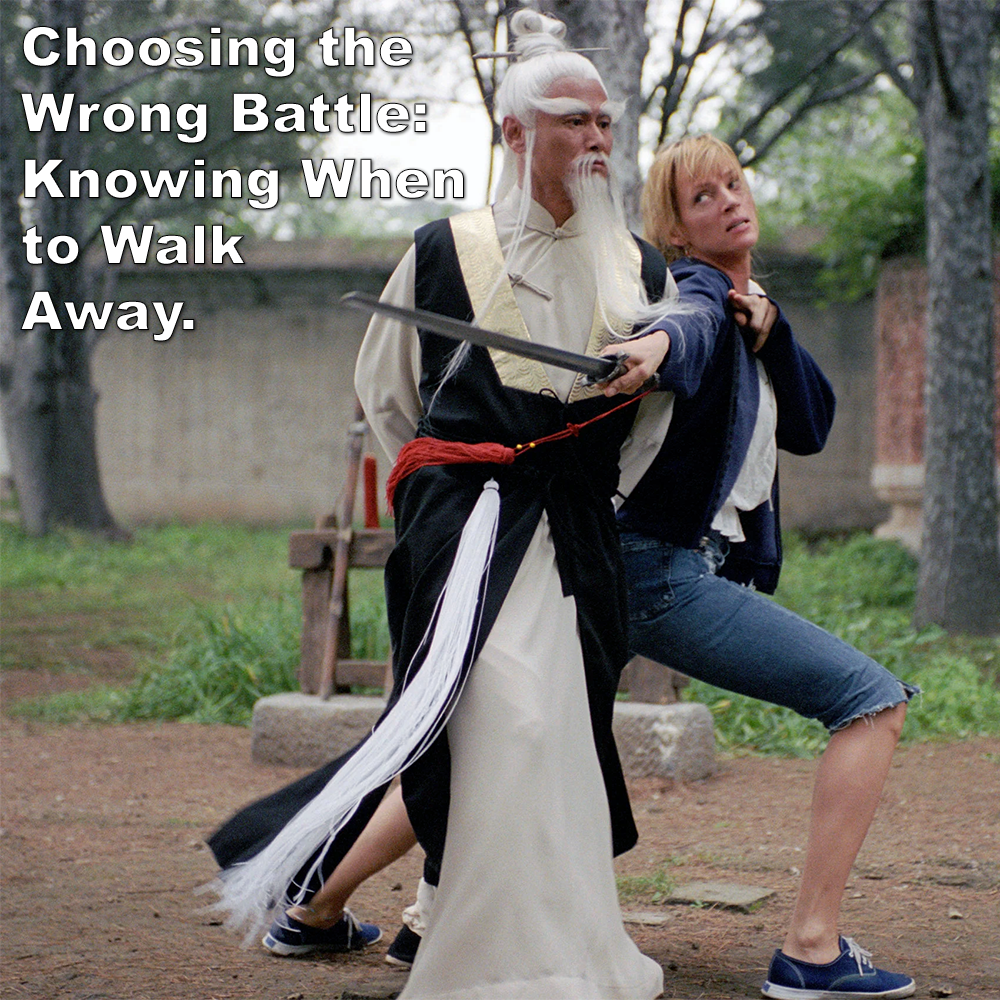
(Approx 2minute 30 second read)
Choosing your battles wisely isn’t just a saying – it’s a skill, one that can mean the difference between escalation and resolution, between staying safe and putting yourself or others in harm’s way.
.
When I joined the ambulance service and began my training, one part of the curriculum was something called ‘conflict management’. It wasn’t a huge focus – just an add-on module, really. By this point, I’d already been training in the martial arts for over four decades, and my instructors of course were well aware of my previous career background.
.
During one of the sessions, the trainer approached me with a scenario. ‘You’re about to go into this room blind’, he said. ‘You won’t know who or what is in there. But no matter what happens, you are not permitted to use your previous skills. In other words – don’t fight back in any way’.
.
It sounded almost ridiculous at first. Here I was, with years of martial arts experience under my belt, being told not to rely on it. But I understood their point – this was not some kind of competition or a life-or-death encounter in the traditional sense. It was about managing conflict without physical engagement, about defusing situations rather than escalating them.
.
Unfortunately, attacks on health service workers are on the increase today, often finding themselves in volatile and dangerous situations. Friday and Saturday nights were especially ‘interesting’ – although, truthfully, every night had its surprises.
.
The calls we responded to ranged from routine to chaotic, and often, we’d walk into situations where tempers were flaring, fueled by alcohol, drugs and heightened emotions.
.
It was in those moments that I had to take a step back – not just physically, but mentally. My instincts, my previous career, and martial arts training told me to brace for confrontation, to protect myself and my crew. But the lessons I had learned reminded me to choose my battles wisely.
.
Fighting, even in self-defense, wasn’t just discouraged – it was counterproductive. Instead, we had to use calm, clear communication and a steady demeanor to defuse tension and restore order.
.
I remember one particular incident during a Saturday night shift. We arrived at a call for a man who had collapsed in a public square, only to find ourselves surrounded by an angry, intoxicated crowd. It would have been easy to let adrenaline take over, to prepare for a fight. But instead, I relied on carefully chosen words and a calm approach, the situation did eventually de-escalate, and we were able to focus on the man who needed our help.
.
That night, and many more like them, reinforce valuable lessons: sometimes, the best way to handle conflict isn’t through physical skill but through restraint, communication, and composure.
.
In life, we all face situations where it feels natural to fight back – whether it’s an argument, a workplace disagreement, or a personal challenge. But true strength often lies in knowing when to engage and when to let go.
.
As martial artists, we train for moments of conflict, preparing ourselves to handle the unexpected. But real proficiency lies in understanding that not every situation requires a fight. Sometimes, the wisest choice is to walk away, to find another path, or to meet aggression with calm resolve.
.
To those who think martial arts is just about fighting, let me ask you this: what are you going to do when the situation demands a ‘no-fight approach’?
.
Choosing your battles wisely isn’t a sign of weakness – it’s a hallmark of strength, wisdom, and clarity of purpose.
.
And remember, aggression and violence against health workers are never acceptable.
.
.
Written by Adam Carter – Shuri Dojo
